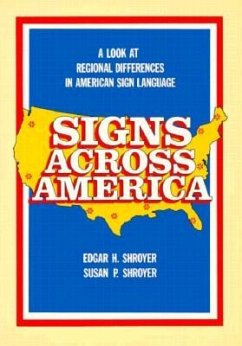
Original Signs
Gesture, Sign, and the Sources of Language
Versandkostenfrei!
Versandfertig in über 4 Wochen
32,99 €
inkl. MwSt.

PAYBACK Punkte
16 °P sammeln!
Armstrong's cogent, highly readable book explains the basic linguistic concepts and academic controversies in a way that makes for an excellent introduction to the study of language. But this is an introduction with an important difference. Unlike most authors, Armstrong includes gesture and signed language at every step, rather than teating the visual channel of language as an afterthought. He makes a strong case for the Whorfian, comparative, and relativist approach to languages as a necessary complement to the Chomskyan universalist perspective that has dominated the field in recent decades...
Armstrong's cogent, highly readable book explains the basic linguistic concepts and academic controversies in a way that makes for an excellent introduction to the study of language. But this is an introduction with an important difference. Unlike most authors, Armstrong includes gesture and signed language at every step, rather than teating the visual channel of language as an afterthought. He makes a strong case for the Whorfian, comparative, and relativist approach to languages as a necessary complement to the Chomskyan universalist perspective that has dominated the field in recent decades, and Armstrong's historical analysis illustrates how the politics of social attitude has influenced scientific views about such questions as whether or not a signed language can be a real language in its own right. His argument starts with the premise that both forms, signed and vocal, are kinds of language, and he examines the important differences as well as the similarities between them, providing insight into basic questions about the nature and evolution of language as a multimodal phenomenon--audio and visual in its essence.












